I jolted in my seat as the five cloaked mystics slapped their palms to the ground and rose in unison. The entire room was silent and you could feel an inexplicable energy in the air.
Here I was sitting in a 550-year-old hammam in Istanbul filled with several hundred people, about to witness a spiritual dance so private yet intriguing.
I was here to see the famed Sufi whirling dervishes spin themselves into a trance-like state in what is known as a Sema Ceremony, a whirling dance that is said to free the soul from worldly affairs and elevate it closer to God.

Watching the Whirling Dervishes Ceremony
The ceremony began with an ensemble playing an array of musical instruments I had never seen nor heard before. Cloaked in black, the dervishes emerged and made their way to the middle of the room. There were bows, slow footsteps and muttered prayers, but the entire experience was a mystery to everyone watching as there was no narration explaining what was happening.
Slowly, one by one the dervishes began to whirl themselves into position. It began with a gentle spin counter-clockwise which gained momentum as they raised their arms into the heavens, and their skirts slowly began to flair and rise.
I almost felt like a bit of an intruder to be watching someone undergo a spiritual journey before my eyes, yet at the same time, it was the kind of thing where I couldn’t stop looking. It was fascinating.
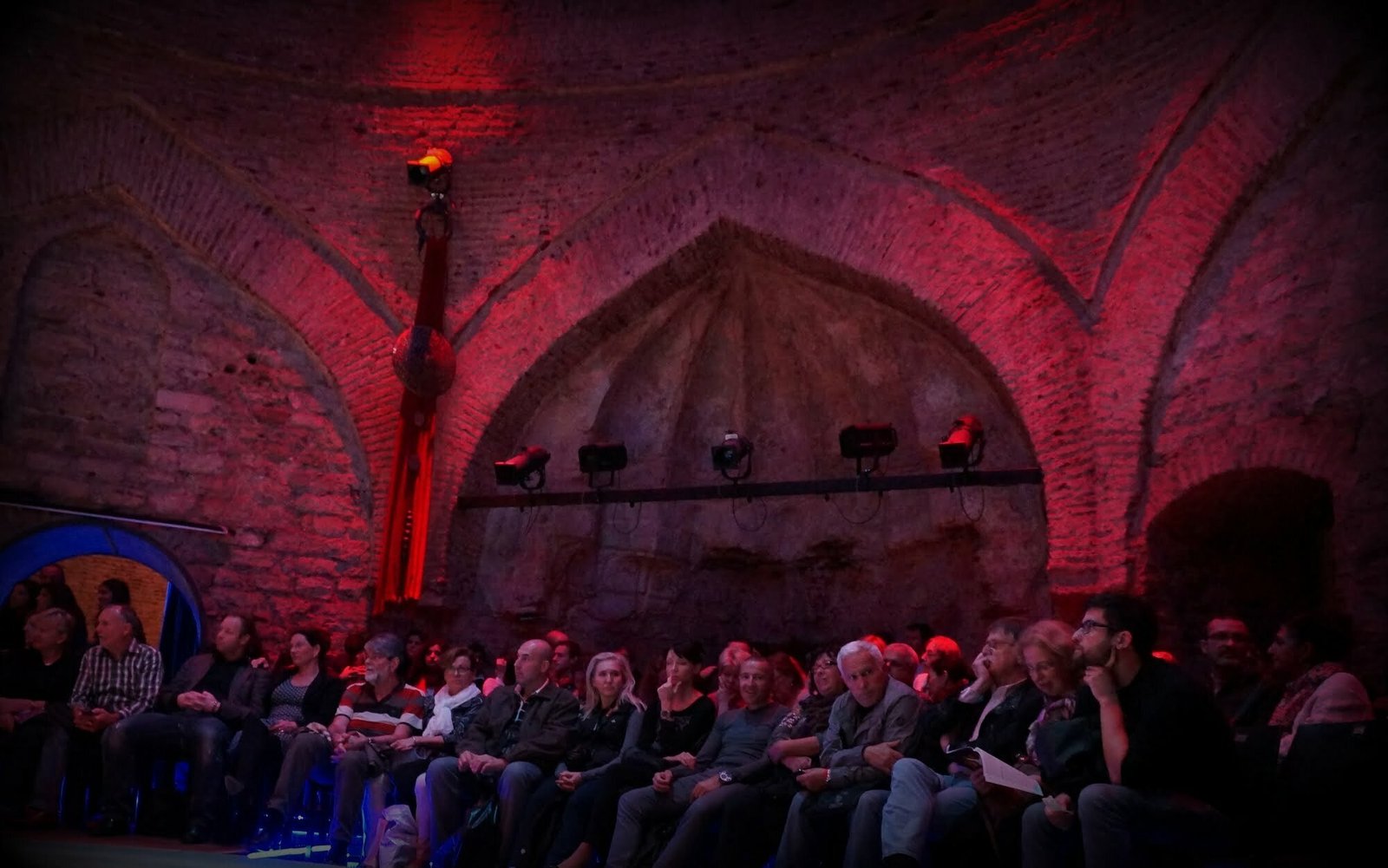
History of the Whirling Dervishes
To give you a little background information, the whirling dervishes I saw perform that night were part of the Mevlevi Order, a Sufi order that was founded in Konya, Turkey back in the 13th century.
While today you can see the dervishes perform this dance known as the Sema Ceremony in public, this wasn’t always the case.
The Mevlevi Order spread during the Ottoman period, however, their practice was banned in 1925 soon after Turkey gained its independence from the Ottomans and became a republic. During this period, the whirling dervishes were viewed with suspicion and their tradition was forced to go underground. It wasn’t until 1954 that Sufi dervishes were given partial rights to perform in public again; this was primarily done as a draw for visitors to Turkey.
Today the Sema Ceremony is a part of the Masterpieces of the Oral and Intangible Heritage of Humanity by UNESCO. With over 800 years of heritage, the tradition is regarded an important piece of Turkey’s heritage and the ritual is taught by universities and cultural organizations as a way of preserving the history and transferring it on to the next generation.

The meaning behind the dervish dress
The dervish dress has a lot of symbolism behind it. Their white robes, known as tennure, are a symbol of death. Their long, black cloaks worn prior to the start of the ceremony are known as hırka and symbolize the grave. And lastly, the felt, brown hats known as kûlah orsikke, represents the tombstone. In short, their dress symbolizes the death of the ego on their quest to come closer to Allah.
Where to see the Whirling Dervishes
So want to see the whirling dervishes in Istanbul?
There are many halls across where you can watch the whirling dervishes perform the Sema Ceremony. I went through the Hodjapasha Dance Theater which is located in Sirkeci, not far from the main tourist attractions.
What I enjoyed most about going through this particular dance theatre is that it is set in an old Turkish bath which is over 550 years old. This former hammam, which was used by both men and women, was in operation until 1988! Sitting under the dome of the main bath and watching the dervishes whirl in such a historic setting made the experience even more special. It’s one of those things you have to do when in Istanbul!
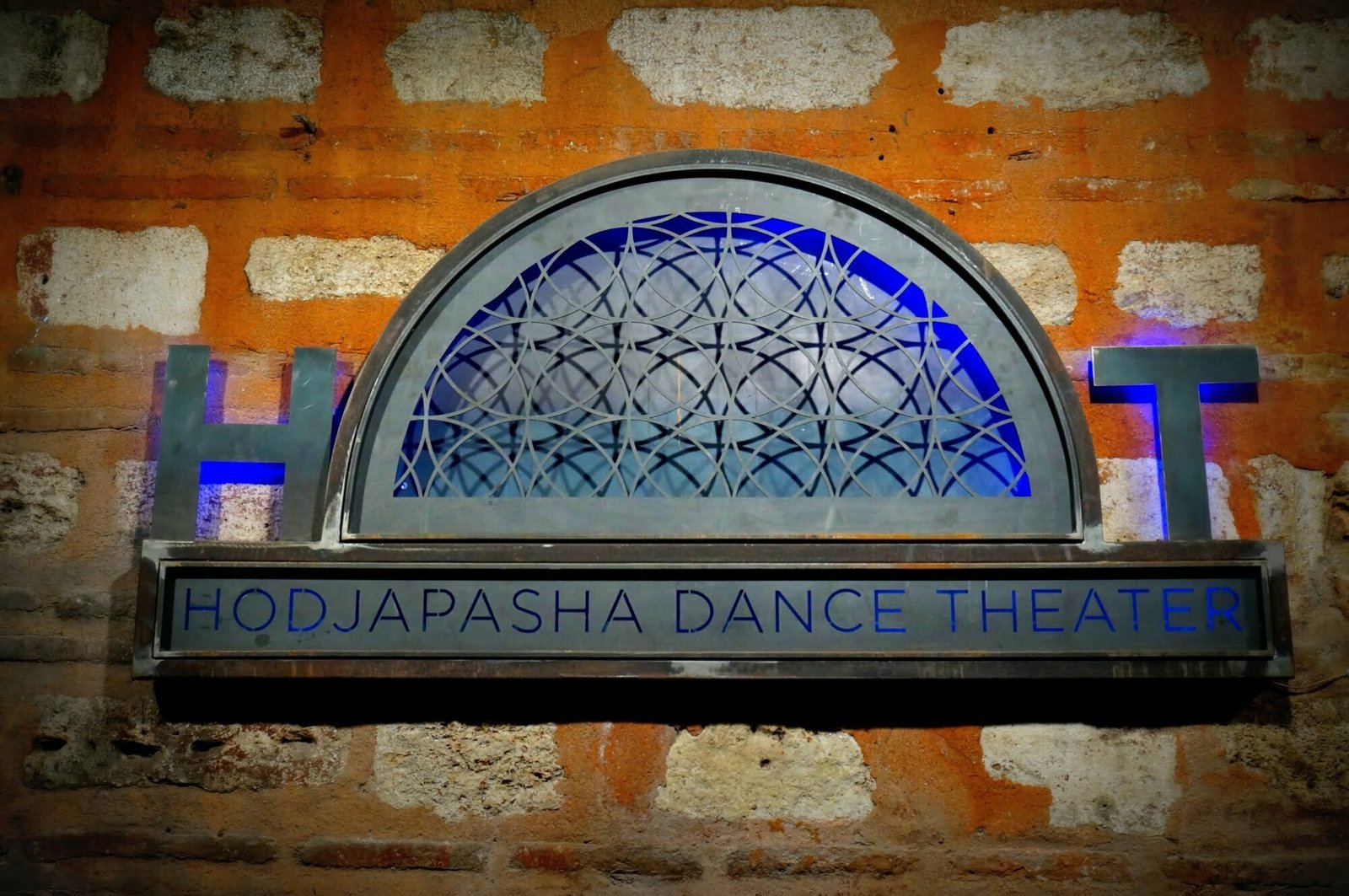
Other Information
- The Istanbul Dervishes performance takes place every day at 19:00.
- Adult tickets are 60 Turkish Lira (about 30 U.S. dollars). Book your ticket here.
- Entry fee includes refreshments.
- The performance is 1 hour in length and there is no photography, no video, and no applauding allowed.
- The address is Ankara Caddesi, Hocapaşa Hamam Sok No. 3B
The dervish photos in this post were taken from Hodjapasha Dance Theatre’s website since I sadly didn’t have the opportunity to photograph the dervishes!
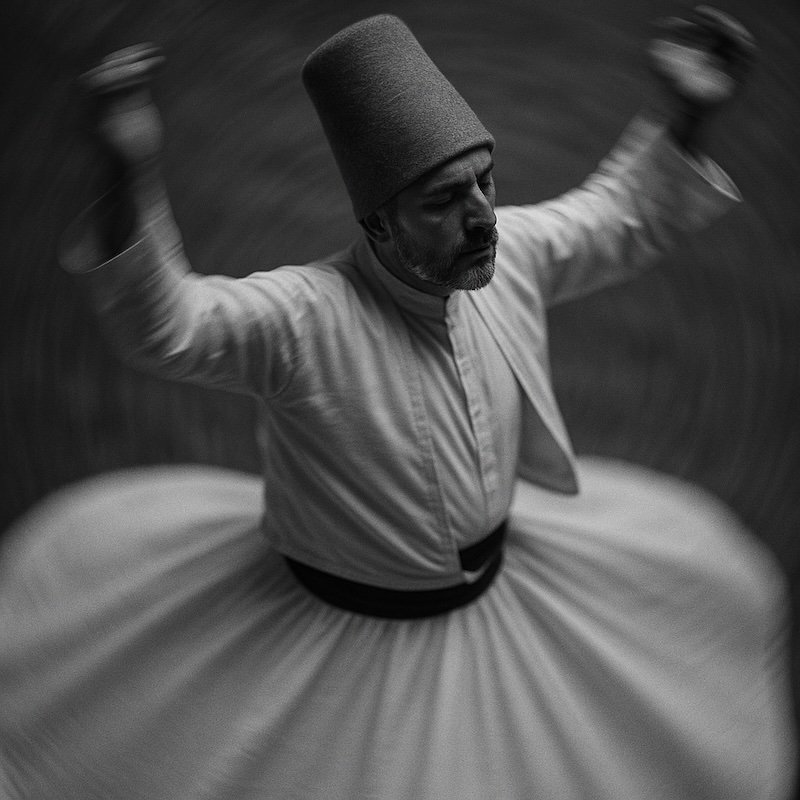
A Deeper Guide to Witnessing the Sema: Planner, Etiquette & How to Choose the Right Venue
You’ve read my first-hand impressions—the hush, the hush within the hush, the way the skirts breathed wider with every turn. If you’re now wondering how to see the sema (seh-MAH) without treating it like a tourist spectacle, this is your guide.
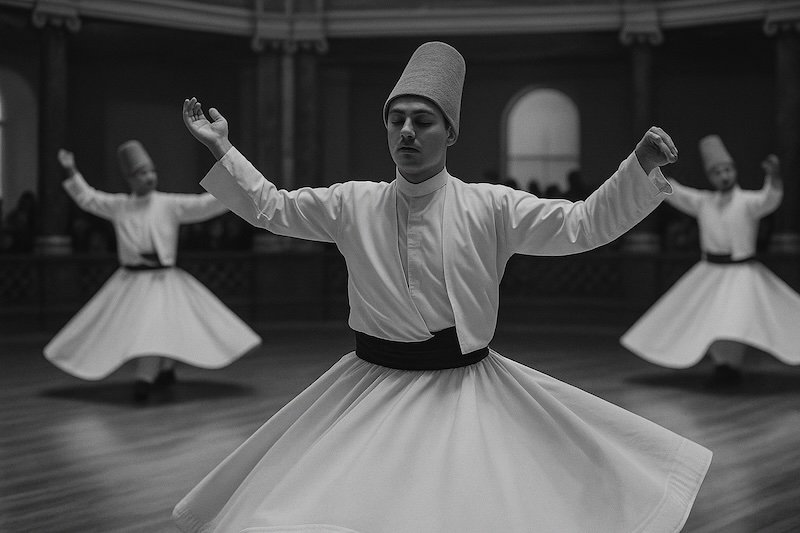
Sema at a Glance (Clean, Row-by-Row)
| Item | Expect |
|---|---|
| Nature of event | A devotional rite of the Mevlevi Sufi order; not a “show” in the usual sense. |
| Typical duration | ~60 minutes (often without narration). |
| Soundscape | Reed flute (ney), kettledrums (kudüm), chants/hymns (ayin). |
| Dress code | Modest, neat, layers for cool stone halls. |
| Photos/video | Commonly prohibited; follow venue rules to the letter. |
| Applause | Often not allowed; if permitted, it will be gentle and at the very end. |
| Seating | Benches or tiers around a central floor; arrive 20–30 minutes early for calm. |
| Language | The rite isn’t “explained” live; many venues hand out brief leaflets. |
| Age guidance | Quiet, observant children are fine; bring a book/quiet toy for prelude music. |
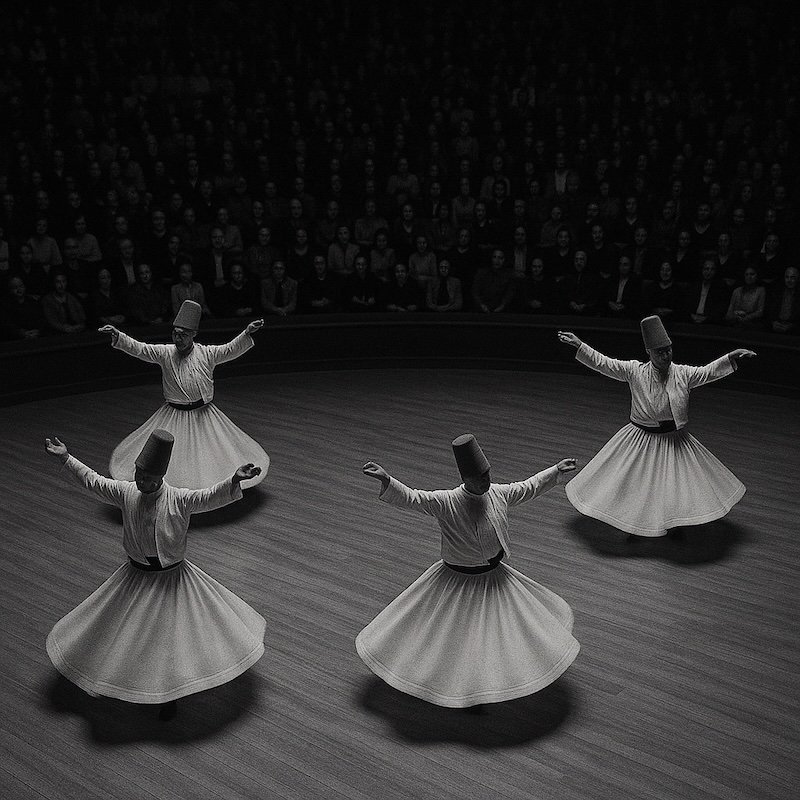
What You’re Seeing: The Anatomy of the Sema
| Part (you may not hear it named) | What Happens | What It Points To | Listen For |
|---|---|---|---|
| Naat-ı Şerif | An opening hymn in praise of the Prophet. Dervishes enter in black cloaks. | Humility, praise, intention. | Melismatic vocals, soft drum heartbeat. |
| Ney Taksimi | A free, improvisatory reed flute solo. | The breath animating the clay—soul awakened. | The ney’s sigh—airy, ancient, longing. |
| Devr-i Veled | Processional circling, bowing to one another. | Seeing the Divine reflected in every face. | Soft shuffle, drum cadence, murmured prayers. |
| Four Selâms (the central whirl) | Cloaks slip off → white robes flare; arms open (right palm up, left palm down). | Progressive states of remembrance: knowledge → love → annihilation of ego → return to service. | The ensemble moves through measured, hypnotic cycles. |
| Closing | Slowing, cloaks on, final prayer. | Return to the world changed inside. | Often no applause; deep, gentle stillness. |
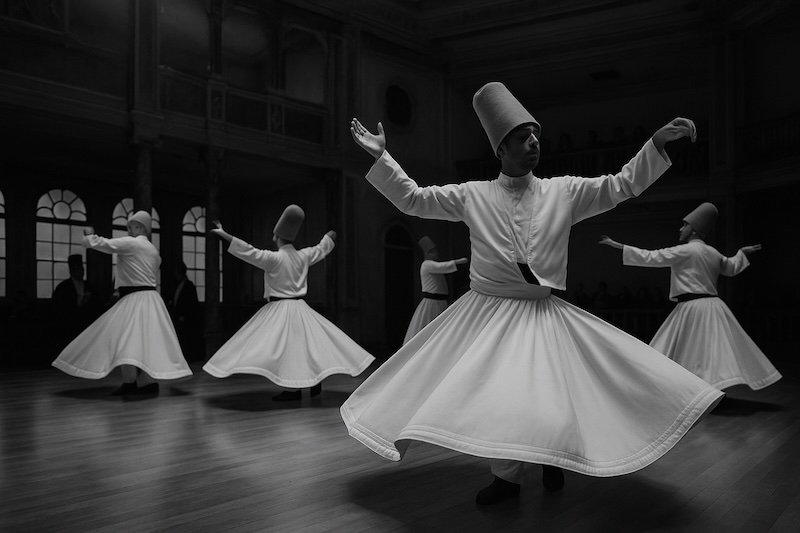
Choosing a Venue in Istanbul (Which Setting Fits You?)
| Venue Style | Example Setting | Vibe | Best For | Keep in Mind |
|---|---|---|---|---|
| Historic Hammam Hall | A 15th-century bathhouse repurposed for culture (like the space I visited near Sirkeci) | Intimate dome acoustics; dramatic stone; seating encircles the rite. | First-timers who want atmosphere + central location. | No photography; plan to sit still. Stone benches can be cool—bring a light layer. |
| Mevlevihane (Dervish Lodge/Museum) | Former lodge near Galata Tower with weekend ceremonies | Museum context + ceremony; educational placards. | Travelers who love context and day-time schedules. | Ceremonies are usually on fixed days; tickets can sell out. |
| Cultural Center/Auditorium | Community halls in Sultanahmet / Fatih districts | Larger capacity, clearer sightlines, sometimes minimal narration. | Families, small groups, or those needing accessible seating. | Less “ancient stone” feel; rules still strict. |
| Seasonal Festivals | Special sema during religious/cultural weeks | Unique atmosphere; expanded ensemble. | Repeat visitors seeking something different. | Tickets released in waves; dates move around religious calendar. |
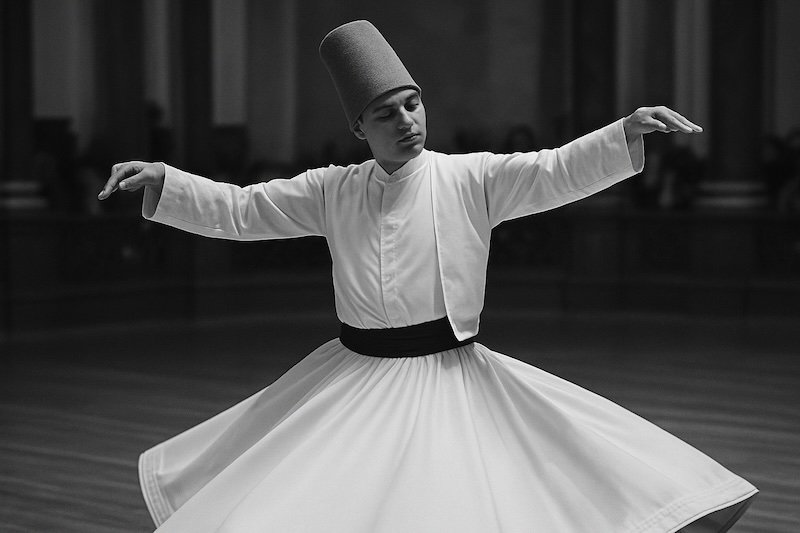
Etiquette & Dress Cheat-Sheet
| Do | Don’t | Why |
|---|---|---|
| Dress modestly (shoulders/chest/legs covered). | Treat it like a photo op or whisper loudly about dinner. | You’re in a sacred space, even without minarets. |
| Arrive early, sit, and settle. | Walk in mid-whirl or swap seats during the rite. | Movement distracts both semazen and neighbors. |
| Fully silence devices; screens face-down. | “Just one” sneaky snap in the dark. | Bright screens break the contemplative field. |
| Read the leaflet if provided. | Demand explanations mid-ceremony. | Much of the meaning is embodied; ask questions after. |
| Follow ushers’ cues exactly. | Clap unless invited at the very end. | Applause is atypical and can feel jarring. |
| Bring patient, quiet children. | Hand out crinkly snack packs. | Unwrap quietly before the music begins. |
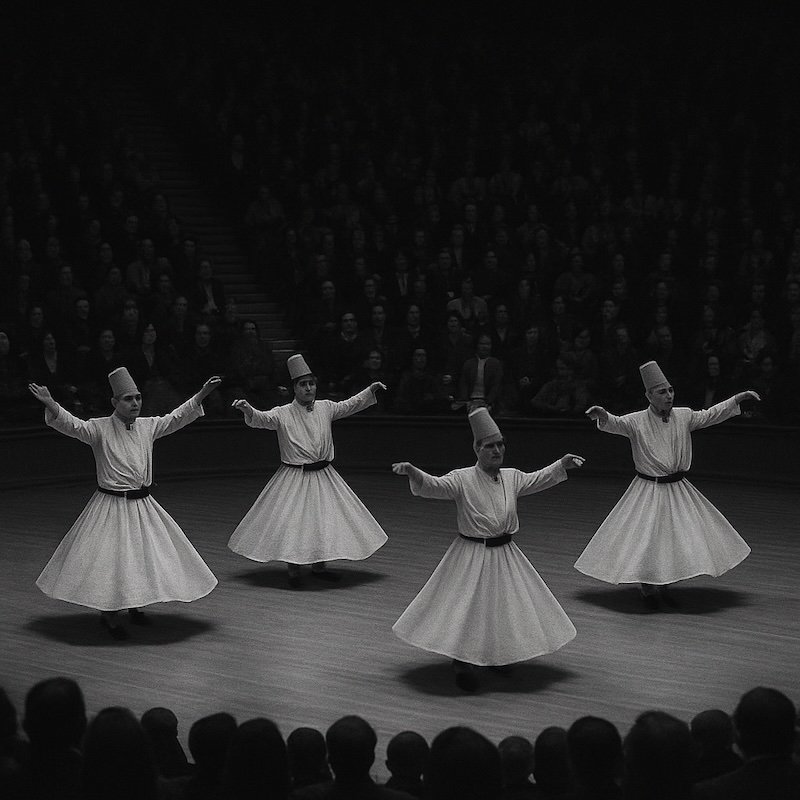
Respectful Traveler FAQ
Is this a performance or a prayer?
Both things can be true: you’re permitted to witness a devotional act. Hold it like a liturgy, not a show.
Why is photography often banned?
The turning is inwardly focused; bright screens and shutter beeps splinter the atmosphere. If a venue allows photos, they’ll say so clearly (usually only at the very end).
What should I wear?
Neat, modest clothing: shoulders/chest covered, knees covered; avoid clattery shoes and strong perfume. Bring a layer for cool stone halls.
Can I bring kids?
Yes—if they can sit quietly. Prep them ahead with a simple story (“We’re going to a quiet dance-prayer; we listen with our whole bodies.”)
Will I understand without narration?
You’ll understand with your senses. Use the anatomy table above as your pocket guide, and read a short leaflet or museum panel earlier that day.
Whirling Dervish Q&A
How do they not get dizzy?
Training. The gaze fixes softly on the left thumb, breath is regulated, and feet trace a taught pattern. It’s learned, gradual, and embodied (please don’t try it in the aisle).
Can women whirl?
Sufism has diverse practices worldwide. Many Mevlevi sema in Turkey feature male semazen; some contemporary Sufi circles elsewhere include women. Follow the custom of the order you’re visiting.
Is there clapping at the end?
Often no; occasionally a gentle, brief applause is invited by the host. When in doubt, mirror the regulars and ushers.
How early should I arrive?
20–30 minutes early is ideal; you’ll avoid the late shuffle, find a centered seat, and settle into the acoustics.
What if I’m not religious?
You’re still welcome. The only “belief” required is reverence: silence your phone, sit still, and let the music do what music does.
I want deeper context—where do I go before/after?
The Mevlevi Lodge Museum near Galata Tower offers panels and artifacts. Pair your evening sema with an afternoon there and the rite will “read” more clearly.
Whirling Dervishes in Istanbul: Sema Ceremony Visitor FAQ
What is a Sema ceremony?
A Sema is a devotional rite of the Mevlevi Sufi order. Accompanied by ney (reed flute), drums, and hymns, semazen (dervishes) whirl in a meditative prayer that symbolizes shedding the ego and returning to the world in service.
Where can I attend a whirling dervish ceremony in Istanbul?
Popular options include historic hammam halls and cultural venues in central neighborhoods. Many travelers choose Hodjapasha near Sirkeci for its atmospheric domed hall, while former Mevlevi lodges and cultural centers also host regular ceremonies.
How long does a Sema ceremony last and what will I see?
Plan for about 60 minutes. You’ll typically experience an opening hymn, a ney improvisation, processional bowing, and the Four Selams—the core whirling segments—followed by a quiet closing prayer.
Is the Sema a show or a religious rite?
It’s a devotional act you’re permitted to witness. Treat it like a liturgy rather than a performance: maintain silence, stillness, and reverence throughout.
What should I wear to a Sema ceremony?
Dress modestly and neatly: covered shoulders and knees, comfortable shoes, and a light layer for cool stone interiors. Avoid strong fragrances and jangly accessories that could distract others.
Are photos and videos allowed?
Many venues prohibit photography and video to protect the contemplative atmosphere. If any images are permitted, it’s usually at the very end and only when clearly announced by staff.
Do I need to book tickets in advance?
Yes—ceremonies are popular and seating is limited. Reserve ahead, especially for weekends and peak travel seasons, and arrive early to settle in quietly.
Can children attend?
Quiet, observant children are welcome at many venues. Prepare them in advance for a seated, silent experience and bring a small, silent activity for prelude music if needed.
Will there be narration or explanations in English?
Often there is no live narration. Many venues provide a short leaflet or program that outlines the parts of the rite; reading it beforehand enriches the experience.
When should I arrive and where should I sit?
Arrive 20–30 minutes early. Seating typically circles a central floor; choose a spot with a clear view and remain seated and still once the rite begins.
What etiquette should I follow during and after the ceremony?
Silence phones, dim screens face-down, avoid whispering, and do not applaud unless the host clearly invites it at the end. Exit calmly and speak softly in the corridors.
How do I choose the right venue for my visit?
Historic hammams offer intimate acoustics and atmosphere; former Mevlevi lodges pair museum context with the rite; cultural centers provide accessible seating and clear sightlines. Pick based on the ambiance and scheduling that suit you best.
Have you ever seen the whirling dervishes? Or have you watched another spiritual dance?

Your articles are always very interesting
I saw a Sema ceremony in Konya, where it originates from. There’s a modern theatre there created just for this purpose, and every evening there’s a free performance open to everyone. It’s quite entrancing to watch, isn’t it?
So entrancing! That’s great to know that they have free performances in Konya. Did you find that there were less travellers there? I think because there are so many tourists in Istanbul, it’s easy for them to charge for the whirling dervish performances. People are more than willing to pay for a glimpse at such a unique practice.
Hi Sam
My parents and I are visiting Konya mid week – could you please recommend where to see the free Sema ceremony – you mention a modern theatre – do you happen to have the name?
Thanks
Sonal
I saw a whirling dervish performance at a caravanserai outside of Göreme, then later saw one of the twirlers as our cab driver! It was a fantastic experience, very small and private, and a very authentic feeling setting.
That’s awesome! What are the chances of that!? 😉
I had no idea a whirling dervish was a real thing…I thought it was just a quirky saying! Thanks for expanding my trivia knowledge Audrey 🙂
Haha, yup, that’s where the saying originated from. 😉
Lucky you! This is on my list since I saw them in a movie (a Woodie Allen movie…? Can’t remember) years ago as a teen. I found it fascinating.
Ooo, I love Woody Allen films – he has such quirky stories and characters. Whirling dervishes would fit right in. 😉
Looks very cool, especially the gorgeous location. Thanks for sharing 🙂
Happy travels!
I loved the location, especially since I didn’t get a chance to go to a hamam for the Turkish bath experience. At least I got to see the inside of one.
The whirling dervishes at the Hodja Pasa is the best place, because the whole show is about an hour long. If you go to the Konya shows, you are sitting for much longer. Beautiful, isn’t it?
Yes, I would agree that 1 hour was enough. If the ceremony were any longer I might start to feel dizzy myself. 😉
Awesome Audrey. We saw the dervishes earlier this year and were blown away! So talented.
That’s awesome! Was this also in Istanbul or elsewhere in Turkey?
It’s pretty expensive I would say, but sounds and looks interesting to us! 😀
Yeah, it would definitely eat your budget if you were trying to do the city on $25 a day, but then again, it’s such a unique ceremony with so much history behind it – I’m glad I went. 🙂
Hi Audrey, one thing I regret when I traveled in Turkey was not being able to see whirling dervishes. I enjoyed reading your post and to learn more about their history. The performance you saw sounds like an authentic practice and not just a mere “show.” I also like the you got to see it in this beautiful and amazing theater. A structure of an old hamman indeed make for a great, dramatic theater. I will keep the info in this post in mind when I return to Turkey, because I will certainly see a whirling dervishes then.
This looks fascinating! Great that you were allowed to take photos too! (or did you do that on the sly?!). I just want to say that I really love your photo of Lake Titicaca on your main page too. I’m jealous you managed to capture the reflection of their skirts in the water!
This is awesome though damn expensive. These guys must be talented.
I’ve never been to Turkey but this looks amazing!
I’d love to go and see this!
Helen x
such pretty outfits
“Today the Sema Ceremony is a part of the Masterpieces of the Oral and Intangible Heritage of Humanity by UNESCO.”
Interesting, we have a version of ‘spoken word’ ceremony in my country known as ‘sema’ – Sema in swahili means say or say it loud.
Thanks for the tip, Audrey. I’d love to see the dervishes whirl but, like you, I am apprehensive about intruding on (and paying to see) what appears to be a spiritual practice. Perhaps I should just get over it.
It is always quite intriguing to watch them although not sure I could do the dance myself
This is definitely on my bucket list. Sadly I couldn’t find out enough about it when I was in Istanbul last year, but it’s definitely on my “next time” list. It sounds like a really cool experience.
This is absolutely mystifying and fascinating. I had never heard of this time of performance. I’m sure it was quite profound. I’ve ben reading about a ceremony here in Thailand where there is a performance that the people become entranced or possessed by their Sak Yant blessings tattooed all over their body.
Hey Ryan…the ceremony is called Wai Kru. I know this post is from 2 years ago so I’m sure you’ve run across this answer already. Just thought I’d share with you as I’ve traveled extensively to Thailand and am a devotee of a Sak Yant master
Wow! This looks really awesome. I would love to see this one day. I don’t understand how they don’t get dizzy.
I’ve seen one once, but I think it was as a child in a hotel somewhere. No idea how ‘real’ it was.
great article and information on finding dervish in Istanbul
the Egyptian version of this derwish dance (mawlawiyya) takes place weekly in an old bazaar in cairo (wekalet ilghouri).. I was fortunate enough to watch them a lot and that’s what made me google for this in Istanbul as am visiting it soon and wanted to make sure I know where to find the sufi whirl
thanks a lot
Audrey,
Four of us (family members) will be in Istanbul on Tuesday, May 20th and would have time to witness the Istanbul Dervishes. Exactly where would I go? Do I need to make reservations? How do I proceed?
Your help would be helpful.
Your blog is very interesting. Thanks
Gerry
Hi Gerry, All the contact info for the “Hodjapasha Dance Theatre” is actually included in this post. If you follow the link to Hodjapasha.com, you’ll be able to make a booking and view a map that shows you the exact address. I would recommend you book several days in advance as it is a popular performance and the theatre is packed every night. Enjoy!
I saw a whirling dervish performance at Mevlana Kültür Merkezi in Konya. The ceremony take place every saturday at 21.00. Unlike in Istanbul and other part of Turkey, in the Cultural Centre, there were 24 performers. Before the ceremony there was a lecture given by Mevlevi University’s lecturer, in turkish, As I do not understand turkish language, I guess it should be about Jalaluddin al Rumi and whirling dervish. What else, isn’t it? It was a very fantastic experience and most importantly, IT IS FREE for everyone. The theatre which they call Sema Salonu was packed with university students locals and tourists. No reservation needed but it is on the first come first serve basis.
I think the spinning symbolizes life as movement equates life while rigidity equates death. Nice photos btw 🙂
They gave us a ride back to our car, so I’m guessing the balloon flight isn’t a round trip. It might be worth confirming that with them.